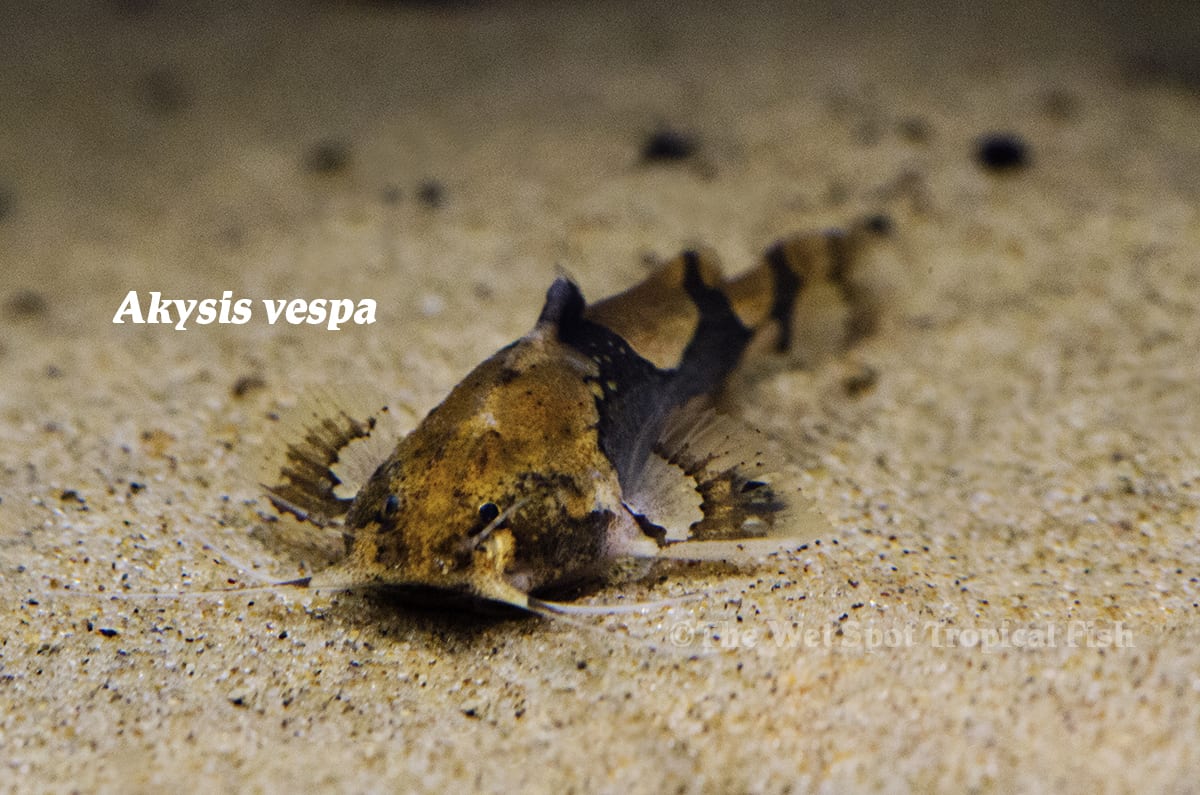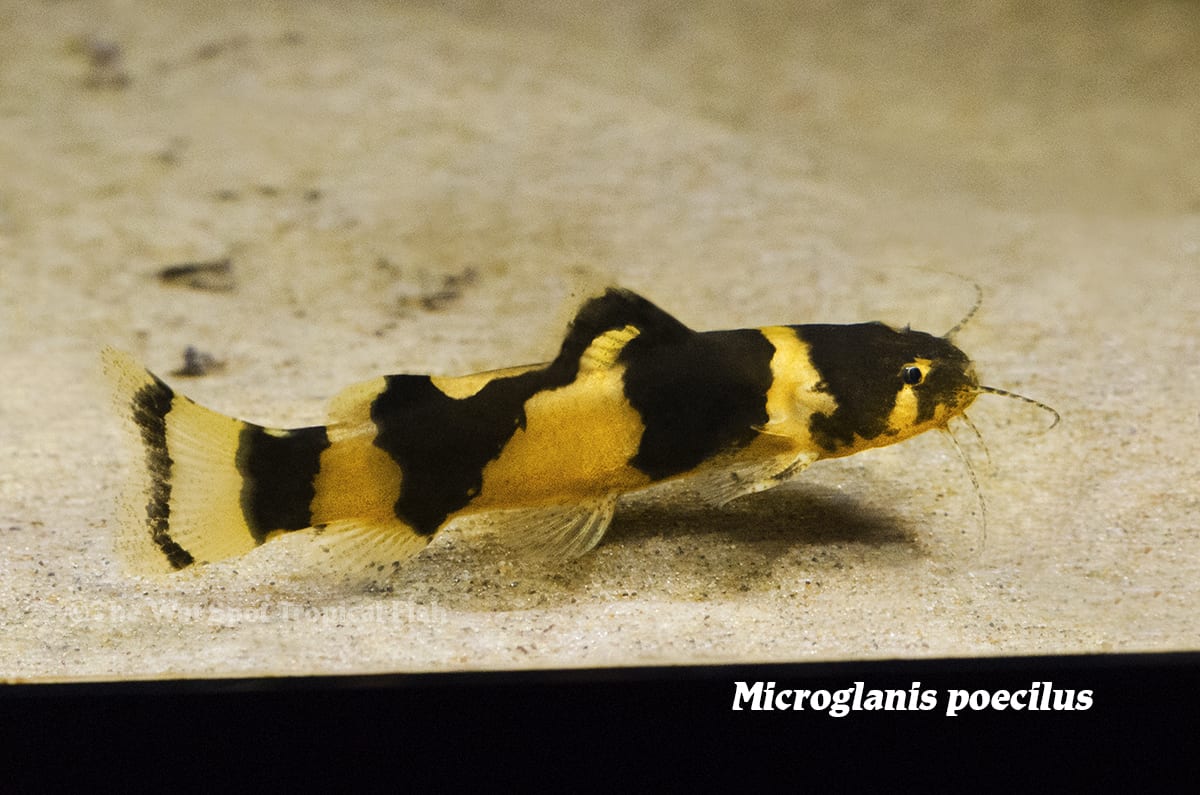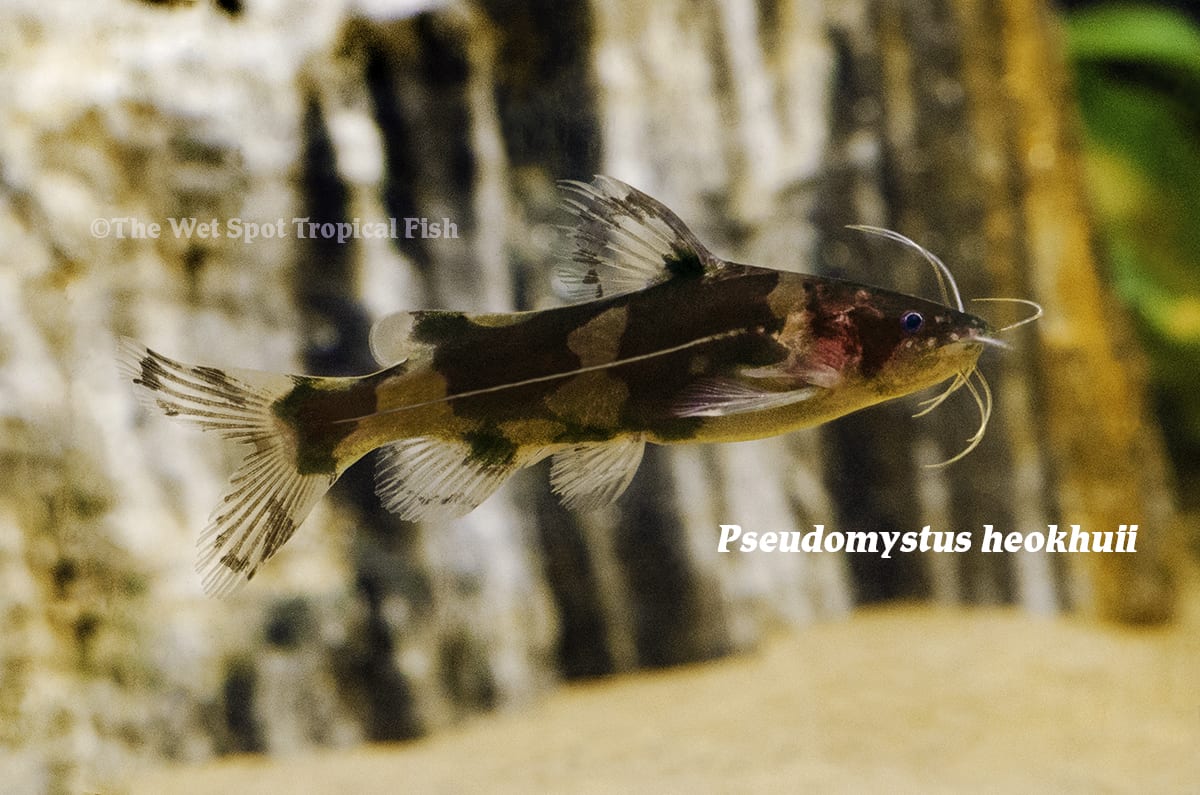Give Bees a Chance
Give Bees a Chance
You may have noticed bees are a hot topic in the news these days concerning their decline, and the food we receive as a product of their pollination services. We at the Wet Spot appreciate their importance, and are familiar with the fact that small creatures can have large impact. In solidarity with the bees, this week we are showcasing our most bee-like fish including Brachygobius sp. “Ozelot”, Akysis vespa, Microglanis poecilus, and Pseudomystus heokhuii.
Scientific NameBrachygobius sp. “Ozelot”
Common NameTiger Bumblebee Goby
Temperature / pH71 to 82°F / 7.0 to 8.5 pH
Native LocationBorneo
Preferred DietAlgae
We’re all familiar with charismatic bumblebees, their fuzzy bodies and bold coloration and striping. It is from these crucial pollinators that B. sp. “Ozelot” gains their common name “Tiger Bumblebee Goby”. With square and elongated bodies reaching up to 2 inches in length, bumblebee gobies have bold black and yellow coloration in thick-blocked stripes. The coloration of tiger bumblebee goby morphs is the same, though their striping is thinner and more marbled and tiger-like. Native to coastal freshwater habitats of western Borneo, these gobies are most often found hiding in mangrove swamps, snags, and brambles, just like bumblebee nests are found underground. These fish require mixed rocky, sandy substrate; addition of crushed coral or marine salt mimics their coastal habitats. Optimal tank setup would include light current, highly oxygenated waters, and plentiful hiding places. Like proper gobies, these fish scrape biofilm and algal food off rocky substrates, and should be fed copious amounts of algae with live and frozen-fare supplementation. They are also known to enjoy eating biofilm from exposed sponge filters. Waters should be maintained with temperatures between 71 and 82°F, with pH of 7.0 to 8.5, and hardness between 143-357 ppm.
Scientific NameAkysis vespa
Common NameOrange Mini Bee Cat
Temperature / pH62 to 74°F / 6.0 to 7.5 pH
Native LocationSoutheast Asia
Preferred DietSmall invertebrates
Recently added to, and even more recently stalled from the endangered species list, is the rusty patched bumblebee. Resembling this insect species, is A. vespa, more commonly known as “Orange Mini Bee Catfish” due to their yellow-orange and brown striped coloration. These catfish share other similarities with bees by having whiskers, and antennae-like protrusions. While bees use their hairs to gather pollen, catfish use theirs for tactile sensing of their environments. The orange mini bee catfish’s natural environment is swiftly flowing streams and rivers with combination sandy, gravelly, and rocky substrate of Burma, Thailand, and Myanmar. Their whiskers act as feelers detecting micro-invertebrates like worms, crustaceans, and insect larvae in the dead of night. In captivity these fish should be fed regular meals of live or frozen fare like daphnia, artemia, bloodworm, and glassworm, though they will learn to accept dried foods over time. These catfish are nocturnal, and spend their days buried in sand, and require some area of pure sandy substrate in their tanks with plentiful hiding places. Water temperatures should be kept from 62 to 74°F, pH between 6.0 and 7.5, and hardness of 36 to 215 ppm.
Scientific NameMicroglanis poecilus
Common NameBumblebee Catfish
Temperature / pH70 to 77°F / 6.5 to 7.5 pH
Native LocationColombia
Preferred DietSmall invertebrates
Bumbling along the decomposing leaf littered bottoms of Colombian creeks with little current is M. poecilus, or the “Bumblebee Cat”. These small catfish reach about 2.5 inches in length, and exhibit bee-like yellow-orange and black striped coloration. The Microglanis genus of catfish is characterized by square skulls and premaxillary teeth (where a bumblebee’s mandibles would be found). This skull shape allows for large mouths that can easily gulp many food types including sinking pellets, bloodworm, brine, mussels, and even small tankmates like tetras. Thus, tankmates should be of comparable size to themselves or larger. South American Bumblebee cats require tanks of about 20 gallons in size with a mixed sandy and rocky substrate, lots of furniture-providing hiding places, Optimal waters would be soft with temperatures between 70 and 77°F and pH of 6.5 to 7.5.
Scientific NamePseudomystus heokhuii
Common NameTiger Stripe Bee Cat
Temperature / pH68 to 78°F / 5.8 to 7.8 pH
Native LocationMekong River
Preferred DietCarnivorous
Another bee-like catfish, P. heokuii, resembles the yellow-faced bumblebee with mostly black coloration and some light yellow striping. Found swimming among the sluggish streams and tributaries of the Mekong River, the Southeast Asian Catfish is a shy, nocturnal species. Tank set ups should include many hiding places for day time and dim lighting. These “Tiger Stripe Bee Catfish” are predatory, and has been known to consume small tank mates. Reaching about 6 inches in length, these fish should be kept only with others of comparable size. Additionally, these catfish are bottom dwellers and may become territorial over others inhabiting that strata of the tank. As predators, their diets consist of meaty foods like prawns, mussels, cockles, and earthworms. They should be fed regular live meals, but can adjust to eating dead or prepared and frozen foods in captivity over time. Tank waters should be kept with temperatures between 68 and 78°F with pH of 5.8 to 7.8, and hardness of 71 to 400 ppm.
Represent the bee-cause and add some bee themed critters to your tank. These fish are much less intimidating than thousands of flying and stinging insects, though who knows, maybe this will be your gateway to fighting the good fight by keeping your own bees! Take it from me, both hobbies are extremely fulfilling.



